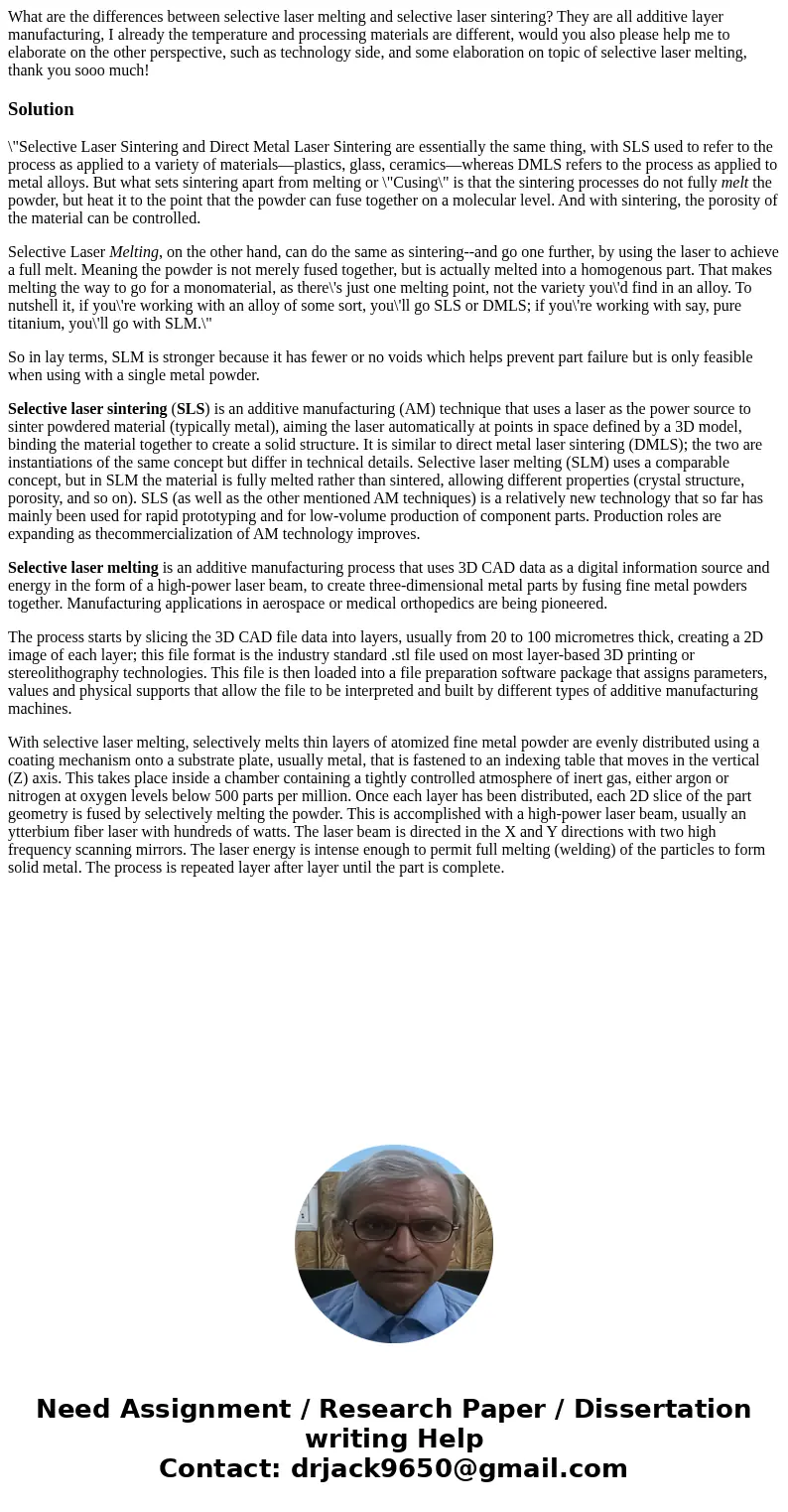What are the differences between selective laser melting and
What are the differences between selective laser melting and selective laser sintering? They are all additive layer manufacturing, I already the temperature and processing materials are different, would you also please help me to elaborate on the other perspective, such as technology side, and some elaboration on topic of selective laser melting, thank you sooo much!
Solution
\"Selective Laser Sintering and Direct Metal Laser Sintering are essentially the same thing, with SLS used to refer to the process as applied to a variety of materials—plastics, glass, ceramics—whereas DMLS refers to the process as applied to metal alloys. But what sets sintering apart from melting or \"Cusing\" is that the sintering processes do not fully melt the powder, but heat it to the point that the powder can fuse together on a molecular level. And with sintering, the porosity of the material can be controlled.
Selective Laser Melting, on the other hand, can do the same as sintering--and go one further, by using the laser to achieve a full melt. Meaning the powder is not merely fused together, but is actually melted into a homogenous part. That makes melting the way to go for a monomaterial, as there\'s just one melting point, not the variety you\'d find in an alloy. To nutshell it, if you\'re working with an alloy of some sort, you\'ll go SLS or DMLS; if you\'re working with say, pure titanium, you\'ll go with SLM.\"
So in lay terms, SLM is stronger because it has fewer or no voids which helps prevent part failure but is only feasible when using with a single metal powder.
Selective laser sintering (SLS) is an additive manufacturing (AM) technique that uses a laser as the power source to sinter powdered material (typically metal), aiming the laser automatically at points in space defined by a 3D model, binding the material together to create a solid structure. It is similar to direct metal laser sintering (DMLS); the two are instantiations of the same concept but differ in technical details. Selective laser melting (SLM) uses a comparable concept, but in SLM the material is fully melted rather than sintered, allowing different properties (crystal structure, porosity, and so on). SLS (as well as the other mentioned AM techniques) is a relatively new technology that so far has mainly been used for rapid prototyping and for low-volume production of component parts. Production roles are expanding as thecommercialization of AM technology improves.
Selective laser melting is an additive manufacturing process that uses 3D CAD data as a digital information source and energy in the form of a high-power laser beam, to create three-dimensional metal parts by fusing fine metal powders together. Manufacturing applications in aerospace or medical orthopedics are being pioneered.
The process starts by slicing the 3D CAD file data into layers, usually from 20 to 100 micrometres thick, creating a 2D image of each layer; this file format is the industry standard .stl file used on most layer-based 3D printing or stereolithography technologies. This file is then loaded into a file preparation software package that assigns parameters, values and physical supports that allow the file to be interpreted and built by different types of additive manufacturing machines.
With selective laser melting, selectively melts thin layers of atomized fine metal powder are evenly distributed using a coating mechanism onto a substrate plate, usually metal, that is fastened to an indexing table that moves in the vertical (Z) axis. This takes place inside a chamber containing a tightly controlled atmosphere of inert gas, either argon or nitrogen at oxygen levels below 500 parts per million. Once each layer has been distributed, each 2D slice of the part geometry is fused by selectively melting the powder. This is accomplished with a high-power laser beam, usually an ytterbium fiber laser with hundreds of watts. The laser beam is directed in the X and Y directions with two high frequency scanning mirrors. The laser energy is intense enough to permit full melting (welding) of the particles to form solid metal. The process is repeated layer after layer until the part is complete.

 Homework Sourse
Homework Sourse